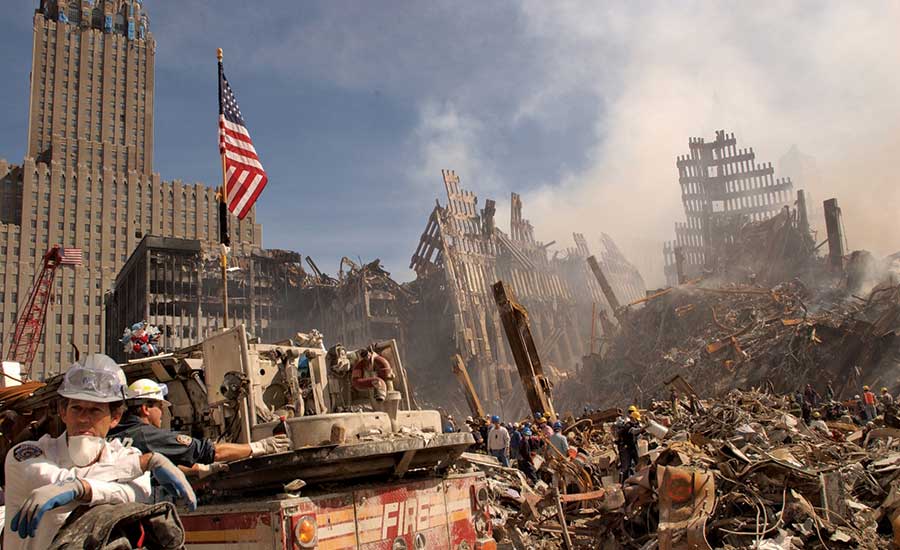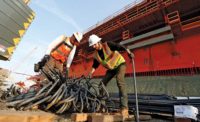A coalition of 12 architect-engineer-contractor groups in New York state is hoping the third attempt since 2013 to get an emergency responder bill passed and signed into law will be successful. The New York Emergency Responder Act would limit liability of design professionals and other emergency responders hired by authorities to provide assistance during post-disaster search, rescue and recovery operations.
Both versions of the bill—Senate 4135, sponsored by Diane J. Savino (D), and Assembly 4241, sponsored by Steve Englebright (D)—are in committee. To be voted on, each version needs to be on the floor of the senate or assembly at least three days in advance of June 15, when the current legislative session ends.
“The next two weeks are critical for us,” says Jay Simson, president of the American Council of Engineering Cos. New York. ACEC NY, a coalition member, is spending time educating legislative leadership to help the bills reach the floor.
The act states that volunteers or those under contract—individuals or corporations—that render emergency assistance shall “not be subject to suit or claim, nor liable for any personal wrongful death, property damage, economic loss or any other damage or claim … relating to the rendering or furnishing of voluntary or contractual emergency assistance in connection with the disaster or emergency.” The exception to the immunity is “work performed in a manner that constitutes wanton, willful or intentional misconduct, or gross negligence.”
The Structural Engineers Association of New York, a coalition member, has been pushing for an emergency responder act for 12 years, in response to events following the Sept. 11, 2001, terrorist attacks on the World Trade Center. After 9/11, teams of structural engineers, organized by SEAoNY, spent four months—24/7—at Ground Zero to help assess the structural stability of the debris pile and any remaining structures so that other emergency responders—firefighters, police and contractors—could more safely do their work of search, rescue, recovery and debris removal. New York City had contracted with the engineers as subcontractors to the city’s lead structural firm, Lev Zetlin Associates-Thornton Tomasetti.
Beginning in 2006, plaintiffs—at least a third of whom are firefighters and police—filed lawsuits against the city and its contractors, which included 22 structural engineering firms. The number of separate lawsuits filed against each defendant eventually surpassed 30,000.
The major complaint was that Ground Zero-area workers were not given proper respiratory equipment and were exposed to thousands of toxins in the air. About 5% of the suits have not been settled.
Early on, structural engineers lost legal attempts to be dismissed from the suits, on grounds their services had nothing to do with air quality (ENR 6/25/07 p. 78).
“The city, which had a $3-billion captive insurance policy for all the engineers and contractors, said, ‘Don’t worry,’ ” says Joseph F. Tortorella, president of Robert Silman Associates, one of the 22 engineers named in the suits. “I always said, ‘We should be worried,’ ” he adds.
Silman has spent more than $100,000 on lawyers to review the suits’ legal documents. “This falls into the category of ‘let no good deed go unpunished,’ ” says Tortorella, who himself has health issues associated with exposure to bad air at Ground Zero.
Glenn R. Bell, in 2001 the CEO of Simpson Gumpertz & Heger, hasn’t kept track of how much SGH, also a defendant, has spent on lawyers. After 9/11, the Boston office sent nine engineers to New York City to assist with rapid damage assessment and long-term recovery efforts.
SGH had decided “to do the right thing,” knowing its insurance might not cover any lawsuits, says Bell, now a senior principal. “We were in an advisory role, working shoulder-to-shoulder with the fire department and the contractors,” he says. “We were not there to direct work.”
Design professionals say the legislation is also needed for the public good. Without limited immunity, most engineers will be reluctant to get involved assisting after the next disaster, they maintain.
Tortorella is an exception. “I know I will volunteer again if needed,” he says.





Post a comment to this article
Report Abusive Comment